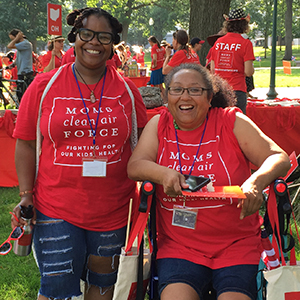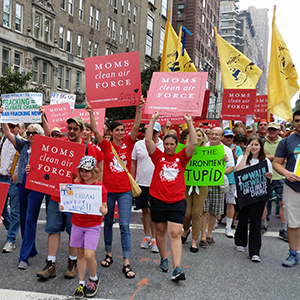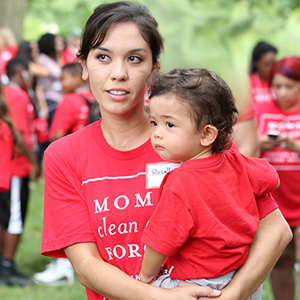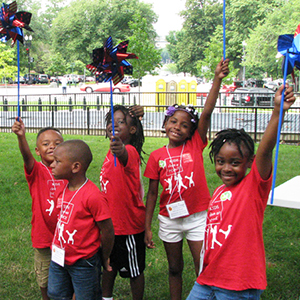This resource has been factchecked by policy experts, using the latest scientific research. Find all our sources linked below.
What is health equity?
Health equity is fairness in health. Health equity is achieved when everyone has a fair chance to reach their best possible health. Our health is affected by many aspects of our lives, including access to things like health care, good jobs, quality education, safe housing, and clean air, water, and soil. Health inequities occur when the conditions in which people are born, grow, play, learn, work, and age unfairly affect their access to opportunities to be healthy.
Access to a clean, safe environment is a key part of health equity. Clean air, water, and soil are not equally distributed, and climate change is making those inequities worse. Climate change is also directly affecting the quality of the air we breathe and the water we drink. Some people are more vulnerable to the health impacts of climate change than others.

How does climate change affect clean air and health equity?
1. INCREASED RISK OF DYING
In the U.S., low-income communities and racial/ethnic minorities are at higher risk of death from exposure to air pollution than other groups.1 Hotter temperatures can make air pollution worse, and climate change is making hotter temperatures more common.2
2. UNEQUAL EXPOSURE TO TRAFFIC POLLUTION
Pollution from the transportation industry is the largest source of climate pollution in the U.S.; this pollution is a major driver of both climate change and health inequities. A 2021 study found that across the U.S., communities of color and low-income neighborhoods were exposed to 28% more nitrogen dioxide (NO2)—a major component of traffic pollution—than higher-income and primarily white communities.3

3. ELEVATED CANCER RISK
Black communities are disproportionately exposed to pollution from industrial facilities, such as oil refineries, which pump millions of tons of toxic pollutants into the air each year and contribute to the formation of unhealthy ozone smog.4 Communities that live near these facilities face elevated risks for cancer and other poor health outcomes.5
4. WORSENED ASTHMA
Black children are five times more likely to be hospitalized with asthma than non-Hispanic white children, and eight times more likely to die from asthma.6 Air pollution can exacerbate asthma, and climate change is increasing the risk of unhealthy air quality.7
5. URBAN HEAT ISLANDS
“Urban heat islands” are densely populated areas with few trees and more asphalt and concrete, and when temperatures rise, these areas can become significantly hotter than surrounding areas. In the U.S., people of color are much more likely to live in urban heat islands than non-Hispanic white people.8
6. EXTREME HEAT AND LEARNING DISRUPTIONS
Research shows that while hot temperatures are associated with worse test outcomes for Black and Hispanic students and students from low-income communities, they have little impact on the test scores of students living in higher-income communities.9

7. TROUBLE FOR PREGNANCY
Air pollution and heat exposure have been linked to poor birth outcomes, such as preterm birth, low birth weight, and stillbirth. Black mothers and babies are at highest risk for these outcomes, and Hispanic mothers and mothers with asthma are also especially vulnerable.10
8. UNEQUAL ACCESS TO GREEN SPACE
Urban “green” areas like parks and playgrounds promote many aspects of health. They provide shade that can lessen the effects of extreme heat, encourage physical activity, provide a buffer from noise pollution, and improve air quality. Communities of color and low-income communities have less access to green space.11, 12

9. ENERGY INSECURITY
Black and Hispanic households are more likely to experience energy insecurity, which is when households can’t afford to reliably meet their basic energy needs. Climate change is increasing the incidence of extreme weather events, and these households are especially vulnerable to impacts like being unable to access adequate air conditioning in heat waves.13
10. MENTAL HEALTH
Many communities, such as communities of color and Indigenous communities, are already at higher risk for the harmful impacts of climate change. These communities often have reduced access to the resources that would help them adapt to climate change, adding to already high levels of stress. This increased burden of stress places vulnerable and marginalized communities at elevated risk for adverse mental health effects from climate change.14
How can we take action to address health inequities?
Tell your lawmakers that you care about clean air, climate change, and equitable health outcomes for all.
And join Moms Clean Air Force to stay up to date on actions you can take to make an impact on health equity, because Moms fight for justice in every breath.
Learn more about Moms’ work on mental health.
Full list of sources.
Released: January 2022




